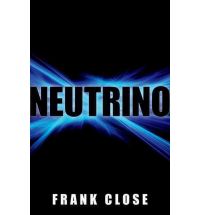MONDAY, 12 DECEMBER 2011
Several fascinating stories from the history of neutrinos, were recounted to a packed audience by the Emeritus Professor of Physics from the University of Oxford, who has written a book on the subject entitled Neutrino.Imagine having to wait 30 years to gather enough experimental data to prove your theories. That's what Raymond Davies who, at the age of 87, shared the 2002 Nobel Prize in Physics, had to do. And it's how long he had to wait to capture just 2,000 elusive solar neutrinos.
Solar neutrinos, created by nuclear processes in the centre of the sun, pass through the earth every day in unimaginably huge quantities (2 x 1038). So infrequent is their interaction with matter, being both chargeless and of a tiny mass, they are almost impossible to detect. Extremely rarely, they collide directly with atoms and the effects of these collisions can be recorded.
This slim chance didn't deter Davies, who built a neutrino trap (using over 600 tonnes a fluid that would detect neutrinos) and put it in a mine to shield it from cosmic rays. This audacious experiment finally proved, in 2000, something many take for granted - that nuclear fusion powers the sun.
Other tales included the tragedy of Bruno Pontecorvo, a Soviety scientist, forced into exile by the political regime, who foresaw many modern neutrino discoveries. He may have missed out on as many as three Nobel Prize by dying too soon. Similarly, the story of a theoretical physicist, John Bahcall, overlooked in favour of experimentalists for his share of the Nobel Prize for pioneering contributions to astrophysics, in particular for the detection of cosmic neutrinos.
Heralding a new field of physics, that of neutrino astronomy, Close was excited by the new world that stood before us where we can use these 'ghost particles' to confirm existing theories and potentially visualise new phenomena in the universe.
In one experiment he described how a handful of neutrinos were detected in the space of a few minutes from a distant supernova explosion. In a game of cosmic chance, these neutrinos travelled for over 160,000 years across the universe to reach us, happening to arrive at a detector in Japan, just two years after it became operational.
Close commented that the frontier of this field relied on seeing more neutrinos, and one way forward was to build bigger detectors. IceCube, encompassing 1 cubic kilometer of Antarctic ice, is one such detector. It utilises frozen water in the Antarctic ice sheet to detect neutrino collisions.
Close was dismissive of recent claims of faster-than-light neutrinos, commenting that there were many experimental sources of error that were yet to be checked. In defense of the group that are portrayed to have claimed the superluminal result, he said that their work was often mis-represented in the media, and that these findings were not the intended focus of their experiment. He also highlighted the need for a specially designed investigation to further investigate neutrino speed and resolve this high profile issue.
Writtren by James Shepherd

